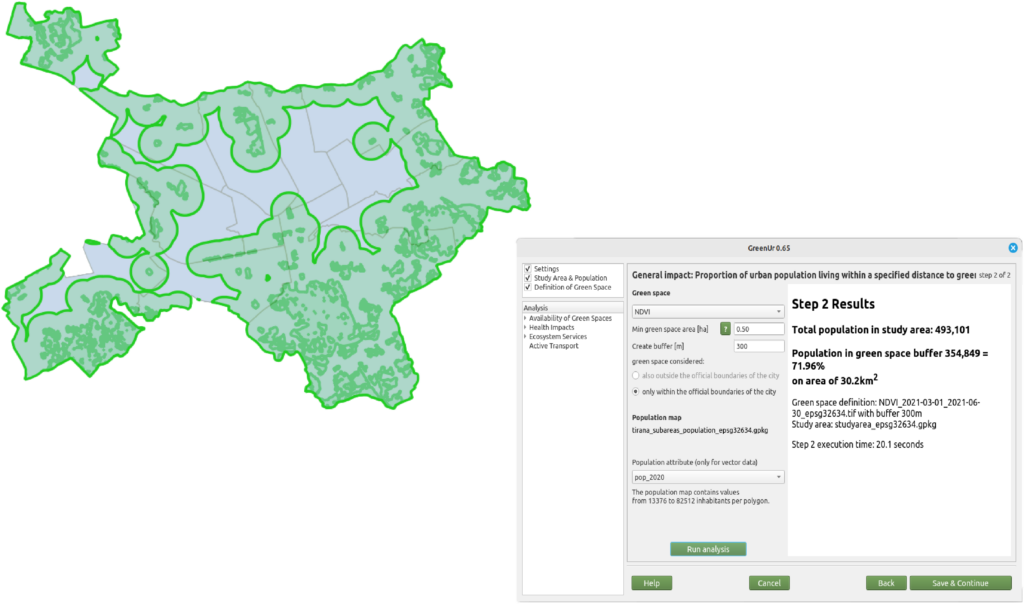The WHO GreenUr tool aims to familiarize the public with estimates of the impact of green spaces on the health of a given population.
The main questions addressed in this version of the GreenUr prototype are the following: How much green space is available for a given city’s population in the context of residential density?
What are the pathways through which green space affects health?
How big would the change in health impacts be in the future if green spaces were changed compared to the current scenario?
All calculations carried out by GreenUr are based on methods determined in social, ecological and epidemiological studies.

